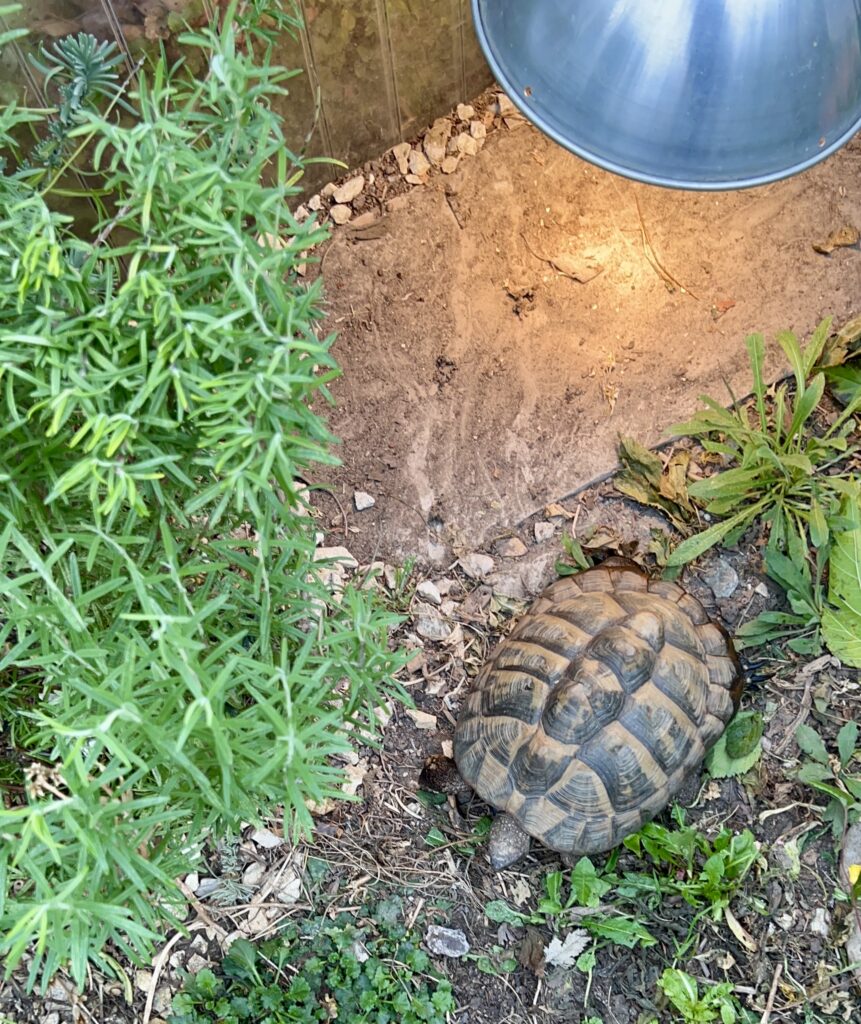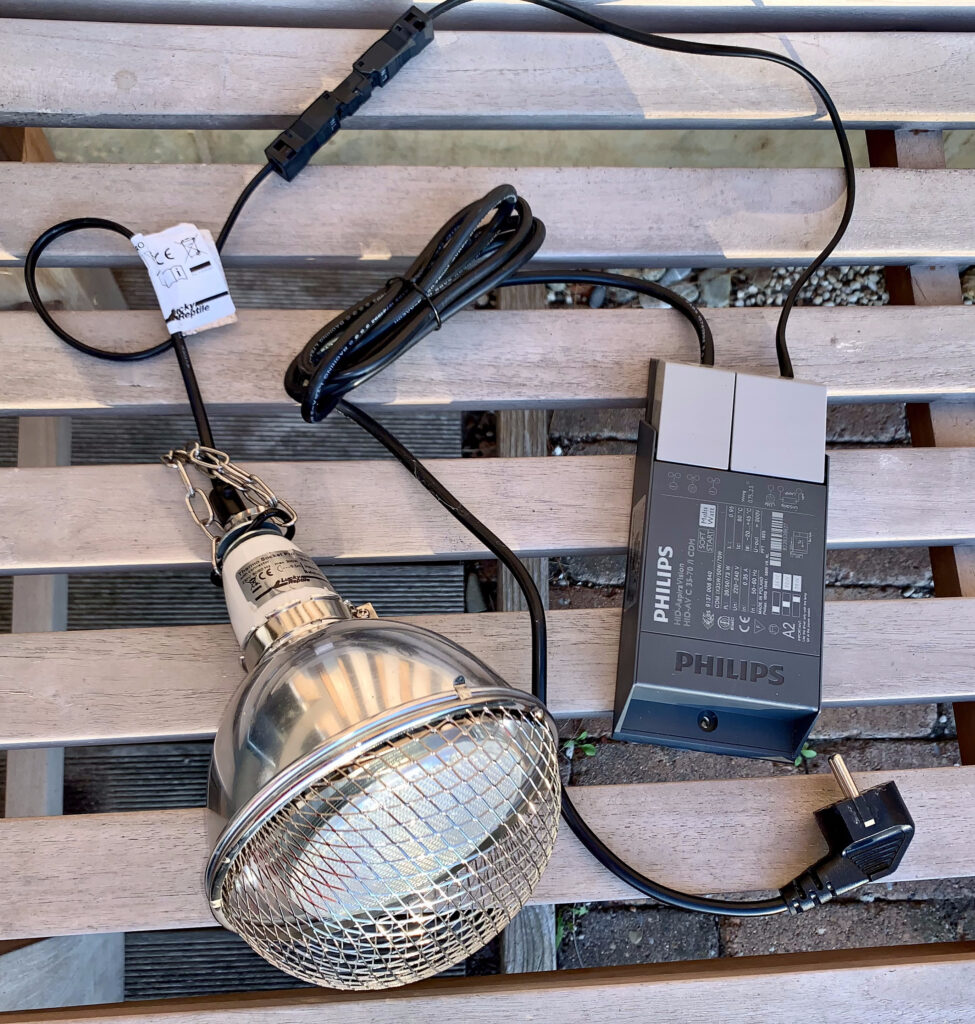UV-B radiation is a form of ultraviolet radiation in sunlight with wavelengths of 280-320 nm. This radiation is crucial for many biological processes, particularly for Vitamin D3 synthesis in reptiles.
Vitamin D3 plays an essential in calcium metabolism by enabling calcium absorption from food. Reptiles in natural environments synthesize Vitamin D3 through UV-B exposure on their skin, converting 7-dehydrocholesterol into previtamin D3. This previtamin is then transformed into active Vitamin D3, depending on body heat, and further converted into 1,25-hydroxy-vitamin D in the liver and kidneys, a hormone that regulates calcium metabolism. Herbivorous reptiles rely heavily on UV-B radiation because their diet contains no Vitamin D3 (cholecalciferol) but only Vitamin D2 (ergocalciferol), which is less effective in calcium metabolism compared to D3.
A deficiency in Vitamin D3 can lead to metabolic bone disease, resulting in reduced bone density and other metabolic issues. Symptoms include swelling, lethargy, general weakness, and shell softening in turtles. In addition to UV-B, UV-A radiation is important for the health of reptiles and amphibians.
UV-A, with wavelengths of 320-400 nm, influences agonistic, reproductive, and signaling behaviors in reptiles. As reptiles can see UV-A light, it plays a crucial in their visual perception, affecting color and signal perception, important for communication, reproduction, and overall well-being. A lack of UV-A can cause stress by altering animals‘ perception and reactions to their environment. It is crucial for reptile health to receive adequate UV-B and UV-A radiation. Young tortoises and egg-laying females are particularly at risk if deficient, as they require more calcium and Vitamin D3. Therefore, ensuring a sufficient calcium intake through diet or supplements is also important.

Sunshine Hours, Solar Radiation, and UV Index
In the Mediterranean region, solar radiation is significantly more intense throughout the year compared to Northern Europe. This is largely due to geographical location and climatic conditions. The Mediterranean lies closer to the equator and is dominated by stable high-pressure systems that produce clear, sunny days. Additionally, the sun’s angle is higher in the sky, allowing more solar energy to reach the ground. This increased radiation results in hot, dry summers with minimal rainfall.
In Northern Europe, frequent cloud cover and more variable weather reduce sunlight exposure. During winter, solar intensity drops dramatically as the sun remains lower on the horizon, and daylight hours are shorter. Even in summer, Northern European regions experience milder conditions due to less direct sunlight.
Sunshine Duration
Studies reveal significant differences in sunlight hours between the Mediterranean and Northern Europe:
- Southern countries like Greece, Italy, and Malta average 7.5 to 8 hours of sunshine daily over the year.
- Northern countries such as the UK or Scandinavia often average fewer than 5 hours per day.
- In summer, Mediterranean regions can experience 12+ hours of daily sunlight, whereas Germany typically has less than 8 hours.
This discrepancy is driven by regional climate dynamics. Southern Europe benefits from stable high-pressure systems, while Northern Europe experiences frequent cloud cover and rain, limiting sunshine.
UV Index
The UV index also highlights stark contrasts between Mediterranean and Central European regions:
- Germany: Summer UV index ranges between 6 and 9; winter or cloudy conditions reduce it to 1-2.
- Greece: UV index during summer often reaches 8-11 or higher.
- Turkey: Coastal regions like Antalya experience summer UV indices of 8-11 or higher.
- Southern Spain (Andalusia): Similar UV levels of 8-11+ during summer months.
These UV values demonstrate the much higher exposure in southern regions, creating ideal conditions for reptiles to absorb strong UV radiation. In Northern Europe, this deficit can be compensated using UV-HID lamps, which provide a spectrum similar to natural sunlight.
UV Requirements for Tortoises
How much UV exposure do tortoises need? Studies by Ferguson and Baines offer critical insights here.
The Ferguson Zones
Developed in 2010 by Professor Gary Ferguson and his team, the Ferguson Zones classify reptilian UV requirements based on sunning behavior and habitat preferences. Fifteen species were initially studied, and their daily UV exposure and thermoregulation behaviors divided them into four zones. The British and Irish Association of Zoos and Aquariums (BIAZA) later used this framework to categorize 254 additional species for creating tailored care guidelines.
- Zone 1: Shade-dwelling or crepuscular species needing minimal sunlight.
- Zone 2: Species that bask occasionally but prefer partial shade.
- Zone 3: Regular sun-exposure species, often in morning or afternoon. Examples: Testudo graeca ibera, Testudo hermanni, Testudo horsfieldii (UV index: 1.0–2.6).
- Zone 4: Full-sun species requiring high-intensity radiation, such as Testudo marginata (UV index: 2.6–3.5).
The marginated tortoise (Testudo marginata) is the only tortoise classified in the high-intensity Zone 4, alongside species like Uromastyx and some agamids. Even the basking Trachemys scripta falls into a lower category.
The UV index serves as a guideline for proper basking conditions, and further details are available in studies by Baines et al., providing valuable information for tortoise care and habitat simulation.

Vitamin D3
Vitamin D3 is crucial for the health and well-being of reptiles, much like in other animals. It plays an essential in mineral metabolism and bone development by enhancing calcium absorption in the intestine.
Without sufficient Vitamin D3, reptiles cannot effectively utilize the calcium from their diet, which is vital for strong bones and overall health.
The synthesis of Vitamin D3 in reptiles is a unique process closely linked to UV-B radiation from the sun. When reptiles bask in sunlight or UV-B light, the rays interact with cholesterol in their skin, initiating the production of Vitamin D3. This natural method of obtaining Vitamin D3 is not only efficient but also safer for reptiles.
Although supplements can provide Vitamin D3, there is a risk of overdose, which can cause health issues.
In contrast, synthesis through UV-B exposure offers a balanced and controlled process that minimizes the risk of excessive Vitamin D3 accumulation.
Once produced, Vitamin D3 activates proteins responsible for transporting calcium from the intestine into the bloodstream. Calbindin, a well-known transport protein, plays a critical by ensuring efficient calcium transport through the intestinal cells.
Vitamin D3’s significant contribution to reptile bone health is maintaining a balanced ratio of calcium to phosphorus, promoting optimal bone mineralization and preventing metabolic bone diseases caused by imbalances in calcium, phosphorus, and Vitamin D3.
Bone demineralization and Metabolic Bone Disease
Symptoms of these conditions include soft or deformed bones, swollen limbs, movement difficulties, and fractures in severe cases. Early diagnosis and interventions, such as dietary adjustments and adequate UV-B exposure, are crucial for the prevention and treatment of these issues.
Vitamin D3 receptors are widespread in reptile cells. Research on cultured cells has shown that Vitamin D3 significantly affects the growth and development of various cell types, suggesting a broader in reptile physiology. For instance, many reptilian immune cells have Vitamin D3 receptors and can produce active Vitamin D3 themselves. A deficiency may increase susceptibility to diseases and autoimmune disorders.
In summary, Vitamin D3 is indispensable for reptiles. Its natural production through UV-B exposure is the safest and most balanced method to ensure optimal health and avoid the risks associated with overdosing.
